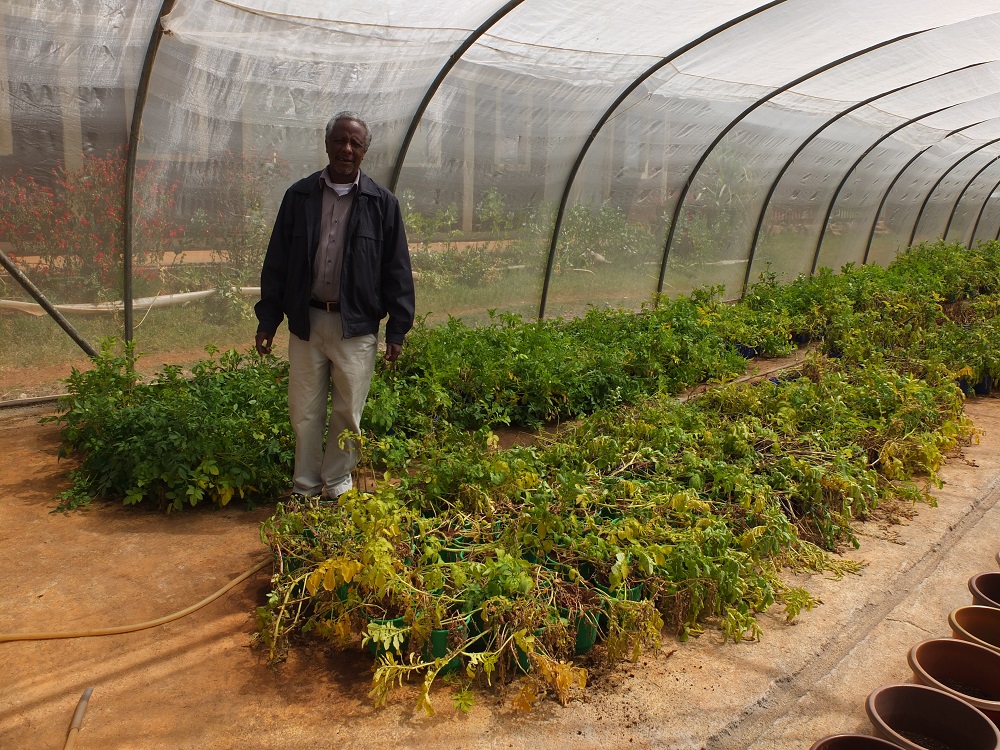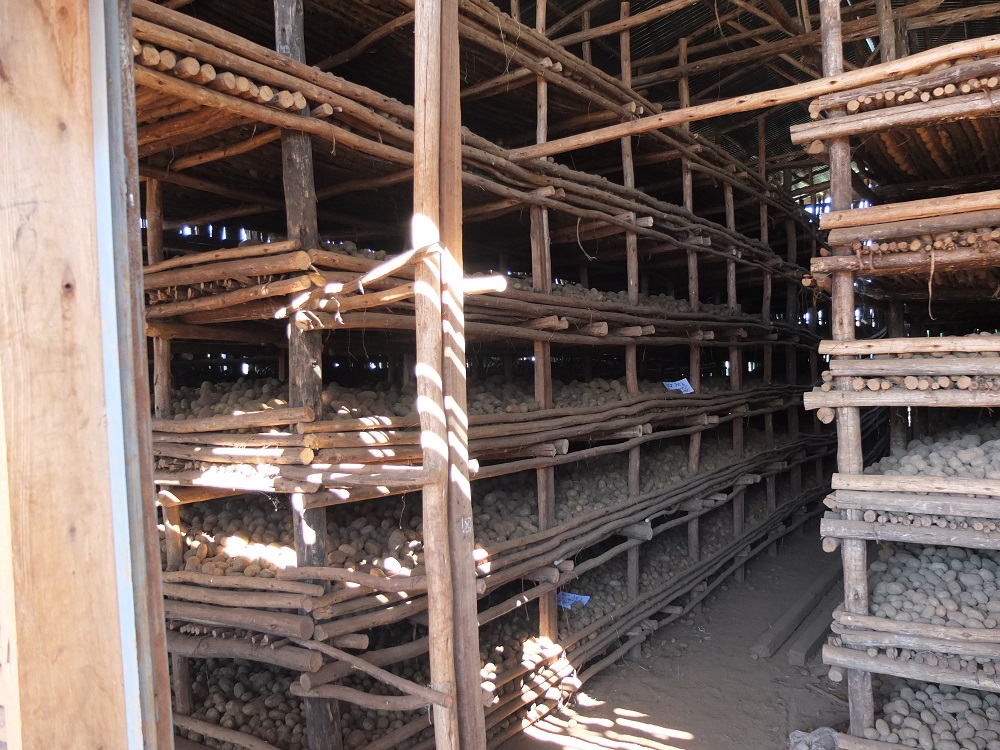At the main EIAR research center based at Holetta, about 30 kilometers from the capital Addis Ababa, scientists and technicians are looking at what can better impact farmers’ lives. With support from CIP, the Potato Team has been focusing on improved varieties, seed management, and clean seed production using aeroponic and sand hydroponic technologies. The collaboration between CIP and EIAR dates back over 30 years, way before CIP opened an office in Addis Ababa in 2009. Over the course of the partnership, CIP has sent potato germplasm from Lima headquarters to Ethiopia as in vitro plantlets and botanical seed, which EIAR staff screen at different locations across the country. “We are looking at adaptability, late-blight resistance, high yields, and processing quality,” Gebremedhin explains, always keeping the interest of farmers in mind.

Gebremedhin in a EIAR screenhouse in Holetta
The results are there. “You should check out the article you wrote a few years ago about a potato farmer from Jeldu. He’s become a wealthy man thanks to potatoes,” Gebremedhin says. Indeed, the CIP annual report for 2008 featured a success story focused on Guta Gudissa, a now famous potato grower in Jeldu, in the highlands of central Ethiopia, known as the country’s potato region. A few years later, Guta is now doing even better. He resorted to renting out land to his neighbors to increase the cultivation surface, and he is giving work to many daily laborers in his fields. Guta has become a ‘model farmer’ working with EIAR and CIP. The model farmers who are organized in cooperatives are serving as a source of the improved potato varieties in the country. Currently there are several hundred ‘model farmers’ who have followed the footsteps of Guta, leaving the cooperatives to start their own businesses.
Guta’s many potatoes are stored in the diffused-light storage (DLS) units that he has built, following technical advice from EIAR and CIP. The DLS units are a common sight in Jeldu, as the technology has been widely adopted by the cooperatives of farmers. EIAR’s Potato Team works directly with the cooperatives. New potato varieties are released to them after two or three generations of multiplication at the research center. Over the past 30 years, EIAR has released about 30 varieties in the country.

Inside a diffused-light storage unit belonging to Guta Gudissa
Cooperative farmers, and staff from the ministry of agriculture, also receive training on seed management. The training follows the FAO guidelines on quality declared planting materials. With support from USAID, CIP and EIAR’s Potato Team have adapted the guidelines to elaborate a manual for Ethiopia’s potato growers. After feedback is received, they will incorporate the changes and have the document translated into Amharic, the national language, for wider dissemination.
“It’s been a most successful cooperation with CIP,” says Gebremedhin. The achievements have been appreciated at the country’s higher levels and the EIAR Potato Team received an award from the government in October this year, in a ceremony attended by the Prime Minister. The award has been issued for the Meritorious National Achievement of the Potato Team for the outstanding problem-solving research output on potato.
CIP and EIAR are scaling up their work together with the construction of two screen houses at Holetta research center and another one in the north of the country. They will be used by the new regional potato breeder that CIP appointed for Eastern Africa, and who will be based in Addis Ababa.

Unloading potatoes in Jeldu
“The collaboration between EIAR and CIP has been exceptionally fruitful and productive, leading to visible changes on the ground among Ethiopian potato farmers,” confirms Steffen Schulz, Head of the CIP office in the East African country. “This can be attributed to the strength and dedication of the staff of the National Potato Program and the willingness of the Ethiopian government to invest in agricultural research and development. The potential of root and tuber crops in general, and potatoes in particular, for improving food security and incomes has long been overlooked in this cereal-growing country. Having demonstrated the impact that roots and tubers can generate, this is now changing: roots and tubers are increasingly recognized as priority crops,” Schulz adds. As another sign of such recognition, EIAR has been selected to host the 10th Tri-Annual Conference of the African Potato Association in Ethiopia in 2016.
Text and photos: Véronique Durroux-Malpartida
